As many Geekscapists know, I have had a hard-on for Phil Hester’s comics for years now, and one of his very best projects has always been Firebreather, which he co-created with artist Andy Kuhn. The Image comic book series tells the tale of Duncan Rosenblatt, whose mother is awesome and whose father is a dragon… and a jerk. Duncan balances expertly-handled real world teenaged drama with epic sci-fi/fantasy adventures, and features one of the most fascinating father/son relationships in modern fiction. Like I said, I’m a fan. Check out the book if you haven’t already.
Last week saw the premiere of the Firebreather animated movie on Cartoon Network, a film that was directed by animation legend Peter (Aeon Flux) Chung. Andy Kuhn was kind enough to take some time out of his very busy schedule (he’s currently working on the new Firebreather mini-series, “Holmgang”) to sit down with Geekscape and answer some questions about the series, the film, and exactly what comics a very busy comic book creator makes time to read these days.
Geekscape: You’ve been doing Firebreather since 2003? Or did it start before then?
Andy Kuhn: Uh… That sounds right to me. (LAUGHS) – In all honesty, I’m not good with dates. Either 2002 or 2003.
Were you in on the ground floor? Did Phil Hester (writer of Firebreather) pitch this to you or did you come up with it together?
How it happened was that Phil and I had a pitch that we had pitched to Marvel called “The Crew.” Which was kind of like The Young Avengers. It was basically teenaged versions of the some of their mainline characters that were, here’s the twist, some of the characters didn’t have their powers when they were teenagers. So who are these kids and why do they have these powers? Marvel was kind of interested in it but their interest sort of petered out after a while. But one of the ideas in this pitch was going to be a kid who was the son of Fin Fang Foom.
Who would have been his mother?
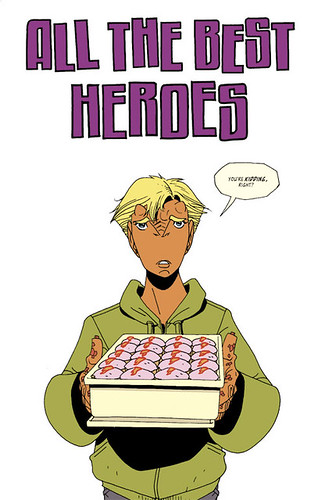
You’d have to ask Phil on that one. I really don’t know. But Marvel said “Thanks but no thanks,” and so Phil and I just retooled it as… After we had pitched The Crew, he said, “Why don’t we pitch something about this character right here.” And I said, “That’s an awesome idea.” And Marvel said, “Thanks but no thanks.” I told Phil it was way too good of an idea to not do it just because Marvel didn’t want to do it. So, thank you Joe Quesada!
Did you read The Young Avengers that eventually got produced over there?
I have not read it. I looked through it, because I’m a huge fan of Jim Cheung (penciller and co-creator of The Young Avengers), but it’s not something that I read. Mostly because I have such a massive stack of stuff that I need to read…! (LAUGHS) It’s hard for me to read anything.
What are you reading right now? As an artist, what are you currently into?
Well, let’s see… I’m currently in the middle of reading Darwyn Cooke’s new Parker.
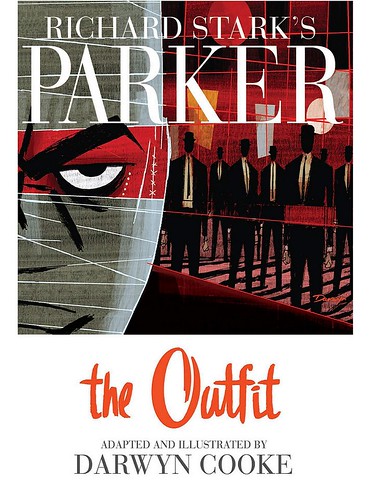
Oh God, The Outfit. I’m getting that for Christmas. I’m so excited about that.
He’s really good.
I loved The Hunter. It was amazing.
That guy… I don’t know what they paid him but he is worth every penny of it. And ten times more. He is a hell of a funnybook maker.
Let’s see, probably my favorite current comic book, American, would be Scout, which is just… every single issue is just heartbreaking and makes you go, “Oh, what’s going to happen next?” Which is how it should be.
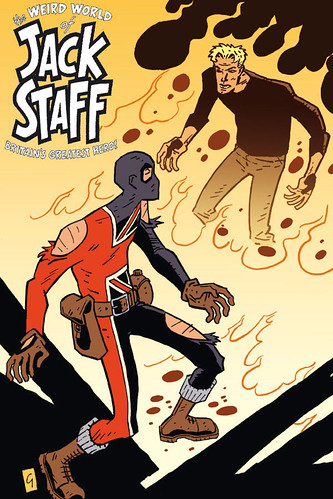
I’m trying to think of what else I’m reading… (The Weird World of) Jack Staff. It’s Jack Staff, but they changed the title. It’s very inclusive of all the other characters that he has involved in the series. I can’t say enough good things about Paul Grist. That guy is an amazing artist, amazing writer.
Well, let’s get back to your amazing work. When did you first hear that they were going to do Firebreather as an animated movie?
When the first issues came out, Paramount optioned the rights to make it into a feature film. And then they held onto that for 18 months and then decided… I guess there was a regime change over there, they didn’t know what they wanted to do with it and let it go. And then Julia Pistor, who was the eventual producer of the animated movie, she knew about that deal and quickly approached us after the rights came back to us. She said, “I think I can get you guys a deal.” So we said, “Sure!” (LAUGHS) – Yeah. “That sounds better than what we’ve got right now!”
She took it out, and there were a few people that were interested but it definitely seemed that Cartoon Network was the most likely to actually get something made. That was our thing. We had sort of already been through it, where… I mean, I’m happy to take free money all day long, but we would rather see something that was made than not, you know? That was our thing. I think we just really, at every turn we had lucked out. It had really great people and producers who understood the comic. And the fact that they hired Peter Chung (creator of TV’s “Aeon Flux”)…
That’s the single most encouraging thing you can hear about an animated project.
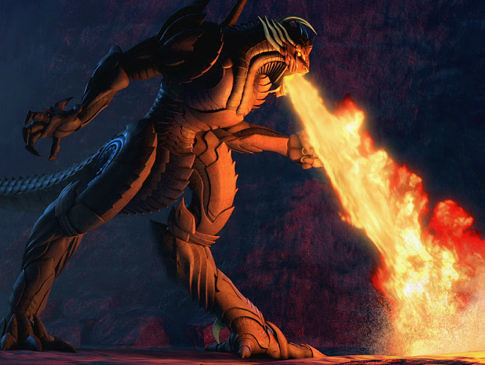
That was the masterstroke. They actually had another guy in line, but the schedules didn’t line up. And then when they said to us, “Well, we think we’re going to get Peter Chung,” Phil and I were both like, “Really? Doesn’t he have anything more important to do?!” (LAUGHS.) I don’t know, it just seemed amazing to me that he would be available, you know?
Were you concerned when they decided to do it in CGI? Were you concerned about your art not translating perfectly? Were you like, “Aw, they’re never going to get the forehead right?”
Well, I really was… At first I was a little concerned, because Phil and I we’re so married to the thing we made. But really in any of this stuff, you have to just realize it’s not the book…
You have to let go.
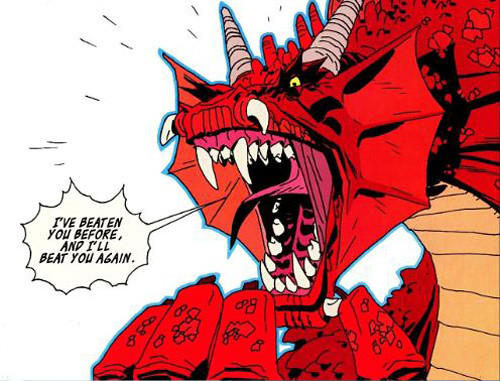
Yeah, you have to trust in the people who are making this thing and let them make it the best thing they can. And I think that our comic book and the movie… The movie is sort of Peter Chung’s version of the comic book, through his own personal set of interests and sensibilities. I think if he had tried to just be faithful to us I don’t think it would have come out as good as it did.
That can backfire, of course. I don’t know if you saw The Last Airbender…
No, I have not.
Okay, don’t. Well, don’t watch the film. Watch the show…! The original series is brilliant.
Yeah, that’s Phil (Hester) said. “It’s maybe the best cartoon ever made.”
Oh, I’m so glad he and I agree on that.
After he said that I sort of actively didn’t watch it, because I wanted to watch it from the beginning.
You have to with that show.
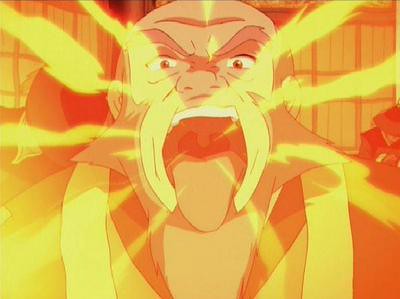
It was ongoing at the time, but I wanted to see it from the start, and I haven’t had the chance to do that yet, so…
So you’ve seen Firebreather by now. What was the reaction? Did you see it with family and friends at a party where everyone was like, “Yeah!” or was it like that episode of “The Simpsons” where Homer was Poochy the Rapping Dog, and everyone was like, “Ooooh…?”
Phil and I got to see the film, an 80% done version of it, at Comic Con at the end of July. At that point, we’d seen drawings but we had not seen any animation at all. So we were really, really sweating it the whole day leading up to watch it. When we watched it, I remember about the first 10 minutes or so I was really looking at everything and just eyeballing it, but about 15 minutes into it I really got kind of caught up in my own story. (LAUGHS) – I was like, “Wow. This is really good. If I were 13 years old this would be my new jam right now!”
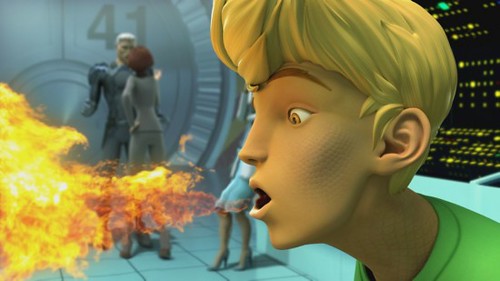
So we really felt great after we had seen that. But as far as when it debuted on TV… My girlfriend is in a scooter riding group, and so they had a little party at one of their people’s house and they had a big projector screen and a bunch of people watched it over there and everybody seemed to like it!
Is there any chance for an ongoing show?
It seems like there’s a fair possibility. There’s nothing concrete yet, but there’s been a lot of talk all along the way. We’re very hopeful that they’ll make more.
Our fingers are crossed.
We’re hoping for the best. I guess it did really well in the ratings on that Wednesday night, so that bodes well.
Thanks for talking with us! I’m really a big fan of the books.
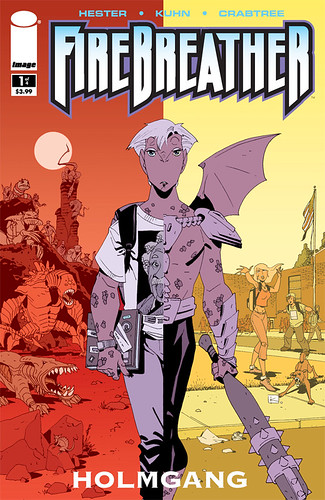
We have a new Firebreather mini-series coming out right now called “Holmgang.” That’s the next part of the storyline.
We’ll be sure to pick it up!